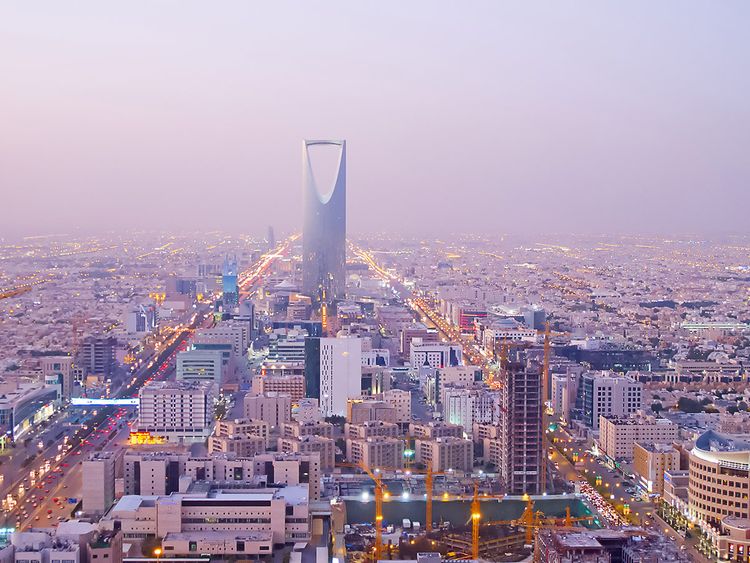The International Monetary Fund (IMF) has emphasized the significance of Saudi Arabia’s tourism industry as a key factor in the nation’s efforts toward economic diversification.
Table of Contents
Kingdom attracts over 100 million visitors in 2023, tourism revenue hits $36 billion Last Year.

Saudi Arabia’s tourism!!
Saudi Arabia has exceeded its ambitious Vision 2030 objective of drawing 100 million visitors each year, accomplishing this milestone in 2023, seven years earlier than anticipated, as reported by the International Monetary Fund (IMF). The IMF’s 2024 Article IV Consultation report highlights the remarkable progress achieved by Saudi Arabia’s tourism industry, which has become a key component of the nation’s strategy to diminish its dependence on oil.
Last year alone, tourism-generated revenues hit $36 billion
In the previous year, revenues generated from tourism reached an impressive $36 billion, with the sector’s direct and indirect contributions to the national GDP currently at 11.5 percent, a figure projected to rise to 16 percent by the year 2034. The increase in non-religious tourism, driven by major international events such as Formula One, the Asian Cup scheduled for 2027, and the World Expo in 2030, has led to a significant rise in both domestic and international visitors to the Kingdom.
This growth has resulted in a surplus in Saudi Arabia’s service balance, indicating that the nation now receives more income from foreign tourists than it expends on its residents traveling abroad. According to the International Monetary Fund, this transformation is supported by substantial infrastructural advancements and luxury projects, including Red Sea Global and Diriyah Gate. These initiatives are designed not only to enhance the Kingdom’s status as a premier global tourism destination but also to safeguard its cultural heritage and improve infrastructure.
The report highlights Saudi Arabia’s achievement in surpassing the Vision 2030 goal of attracting 100 million visitors annually by 2023, accomplishing this milestone seven years ahead of the planned timeline. In 2023, tourism revenues reached $36 billion, with net tourism income experiencing a remarkable increase of 38 percent.
The direct and indirect contributions of the tourism sector to the GDP amounted to 11.5 percent in 2023, with projections indicating growth to 16 percent by 2034. This growth has been primarily driven by robust domestic demand and a rise in international arrivals. There has been a notable increase in non-religious tourism, fueled by greater leisure travel and visits to friends and relatives, further enhanced by significant international events such as Formula One, the 2027 Asian Cup, and the 2030 World Expo.
The IMF report emphasizes the importance of tourism in transforming Saudi Arabia’s service balance into a surplus, indicating that the Kingdom is now generating more income from international visitors than it spends on outbound tourism. By 2022, this transition resulted in a favorable balance, and 2023 witnessed additional gains through heightened revenue from transportation and service exports. Furthermore, the report indicates that while spending on outbound tourism by Saudi nationals has decreased, expatriates residing in the Kingdom have significantly increased their leisure expenditures following the COVID pandemic.
A key factor in this transformation is the diverse connections that Saudi Arabia’s tourism sector has established across various industries, including food, beverage, travel, cultural sectors, and accommodation. These interconnections are instrumental in diminishing the Kingdom’s dependence on oil-centric industries. Significant giga projects such as Red Sea Global and Diriyah Gate play a crucial role in this transition, emphasizing luxury tourism, cultural preservation, and enhancements in infrastructure.
Kingdom’s Ministry of Tourism said..
According to the annual report released by the Kingdom’s Ministry of Tourism, travelers from the Gulf Cooperation Council (GCC) nations expended over $3.9 billion while visiting Saudi Arabia. The report indicates that approximately 8.6 million visitors from these countries traveled to Saudi Arabia, comprising 3.5 million from Bahrain, 2.3 million from Kuwait, 1.4 million from the United Arab Emirates, 1.1 million from Qatar, and 455,000 from Oman.
In 2023, Saudi Arabia experienced an influx of 27 million international visitors, who collectively spent over $37 billion within the Kingdom. The report further indicated that the total number of both domestic and international tourists exceeded 109 million. The tourism sector in Saudi Arabia has demonstrated remarkable growth in recent years, largely fueled by an increase in visitors from the Gulf Cooperation Council (GCC) and other regions worldwide. Since the launch of Saudi Vision 2030 in 2016, the Kingdom has made substantial investments in tourism as part of its strategy to transition away from an oil-dependent economy. Consequently, these investments across various sectors have significantly bolstered the economy, establishing Saudi Arabia as a leading destination for tourism.
Saudi Arabia’s tourism Vision 2030
Vision 2030 continues to serve as the Kingdom’s comprehensive economic reform strategy, with tourism positioned at its center. The IMF’s acknowledgment of Saudi Arabia’s advancements underscores the immense potential of its tourism sector and its ability to foster sustainable economic growth in the future.
Providing timely updates on global issues, ensuring readers receive unbiased information.
